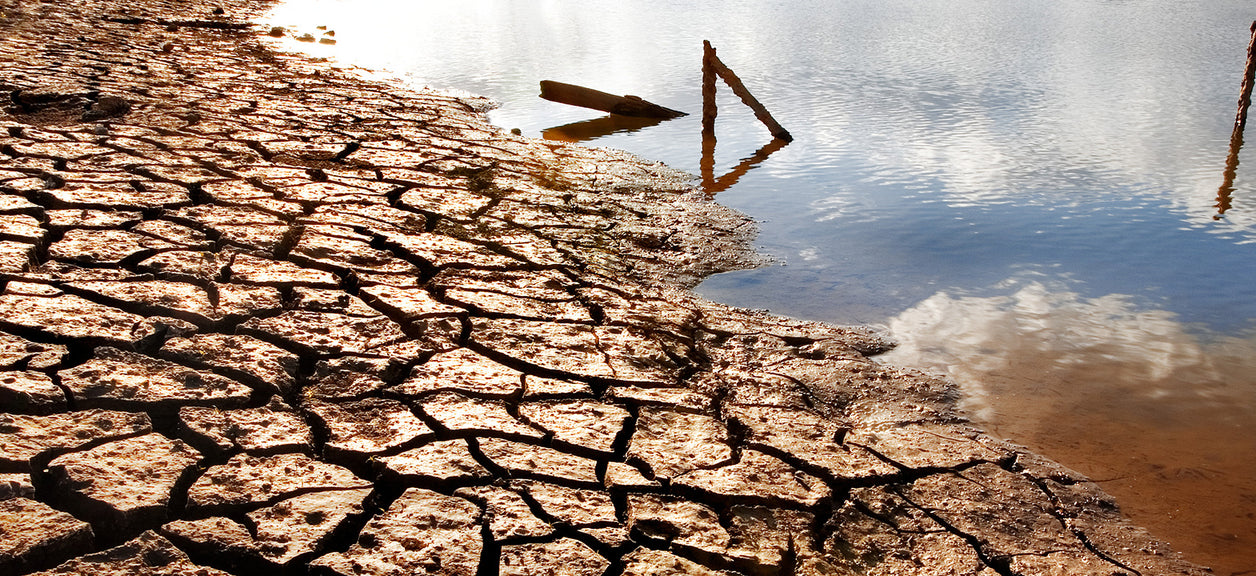
The effects of climate change on drinking water
In October 2018, the Intergovernmental Panel on Climate Change (IPCC), part of the United Nations, issued a report entitled, Global Warming of 1.5°C. Using over 6,000 scientific references, it examined the ecological impact of limiting the earth’s temperature rise to 1.5°C, or 2.7°F, versus letting it climb to 2°C. In short, one half of one degree could be the difference between the world we know now and the extinction of many life forms.
In the two centuries since the Industrial Revolution, global warming has increased by about 0.9°C or 1.62°F. This increase isn’t even a full degree Celsius, yet today people around the world are experiencing the challenges of higher ocean levels, diminishing polar ice caps and more frequent extreme weather. If temperatures keep rising, what will be the impact of climate change on our drinking water?
Droughts and water scarcity
Higher temperatures can lead to droughts and cause source water for drinking, like rivers and lakes, to dry up. Also, mountain glaciers are sometimes referred to as “natural water towers.” As glaciers recede due to increased temperatures, this water source also grows more scarce.
Floods and water infrastructure
Conversely, rather than too little water, climate change can also exacerbate hurricanes and flooding. This year, Hurricane Florence caused record levels of flooding in parts of North Carolina. As a result, the public drinking water supply system was breached. Following the storm, officials warned residents not to drink the water because potentially harmful bacteria from area agricultural and hog production had seeped into it.
What everyone can do
One easy way to curb climate change is to refrain from buying single-use water bottles. Emissions are generated during the processing and transportation of bottled water, and scientists have discovered that “plastics emit the greenhouse gases methane and ethylene when they are exposed to sunlight and degrade.” Additionally, plastic water bottles (and straws) contribute to ocean pollution.
The Coway Aquamega 100 triple-filter system can provide you and your family with an unlimited supply of drinking water—without the need for plastic bottles. In every glass, you’ll enjoy clear, crisp water, right from the tap.
Disclaimers
1Coway air purifiers have been proven to trap dust, pollen, dander, viruses and bacteria in the air based on KCL (Korea Conformity Laboratories) testing.They have been tested in a 30㎥ size chamber according to the Korea Air Cleaning Association standard (SPS-KACA 002-132:2022 Modified) to measure the 0.01㎛ size of particle removal rate. It was tested on maximum airflow speed in normal room temperature and humidity conditions. The performance may vary in the actual living environment of customers.
→ Tested with Airmega Aim, 50, 100, 150, 160, Tower AP-1216L, Mighty AP-1512HH, MightyS AP-1512HHS, 200M, Icon, IconS, 230, 240, 250, 250 Art, 250S, 300, 300S, 350, 400, 400S, 450, ProX
299.97% of viruses, bacteria, fungi and pollen were verified to be removed from the air for Coway air purifiers which have Green True HEPA™ filter applied based on the Japan Food Research Laboratories(JFRL) testing according to JEM 1467 standard.
→ Tested with Coway Airmega Mighty AP-1512HH, MightyS AP-1512HHS, 250, 250 Art, 250S, 300, 300S, 400, 400S
→ All tested by JFRL and received above result within below time.
4The concentration of ammonia, acetaldehyde and acetic acid were proven to be removed within 30 minutes by FCG Research Institute, Inc. Human Life Science Lab. It is not a demonstration result in the actual use space. Not all odors and gases may be supported. → Tested with Coway Airmega 150, 160, Mighty AP-1512HH, MightyS AP-1512HHS, 400, 400S
5The coverage area of the air purifier is based on an area where the air cleaner can make two air changes per hour (ACPH). An air change per hour translates to how many times an air purifier can clean an area, assuming the height of a ceiling to be 8 ft, in one hour. Therefore ** means two air changes per hour means that the cleaner can clean the area once every 30 minutes and * means air changes per hour means that the air purifier can clean the area once every 60 minutes.
10Terms and conditions apply. Discounts, including promotions, coupons, bundle discount and subscription discount, cannot be stacked on top of other coupons. During promotional periods, discount codes will not be able to be applied to orders. Promo codes may apply to products only—filters, accessories, and new products within 3 months of the release date are not included.
11Based on Coway R&D internal laboratory testing, activated carbon filtration was shown to remove up to 95% of ammonia odors within 40 minutes, and up to 99% of fecal odors within 20 minutes. Actual performance may vary depending on usage conditions.



























